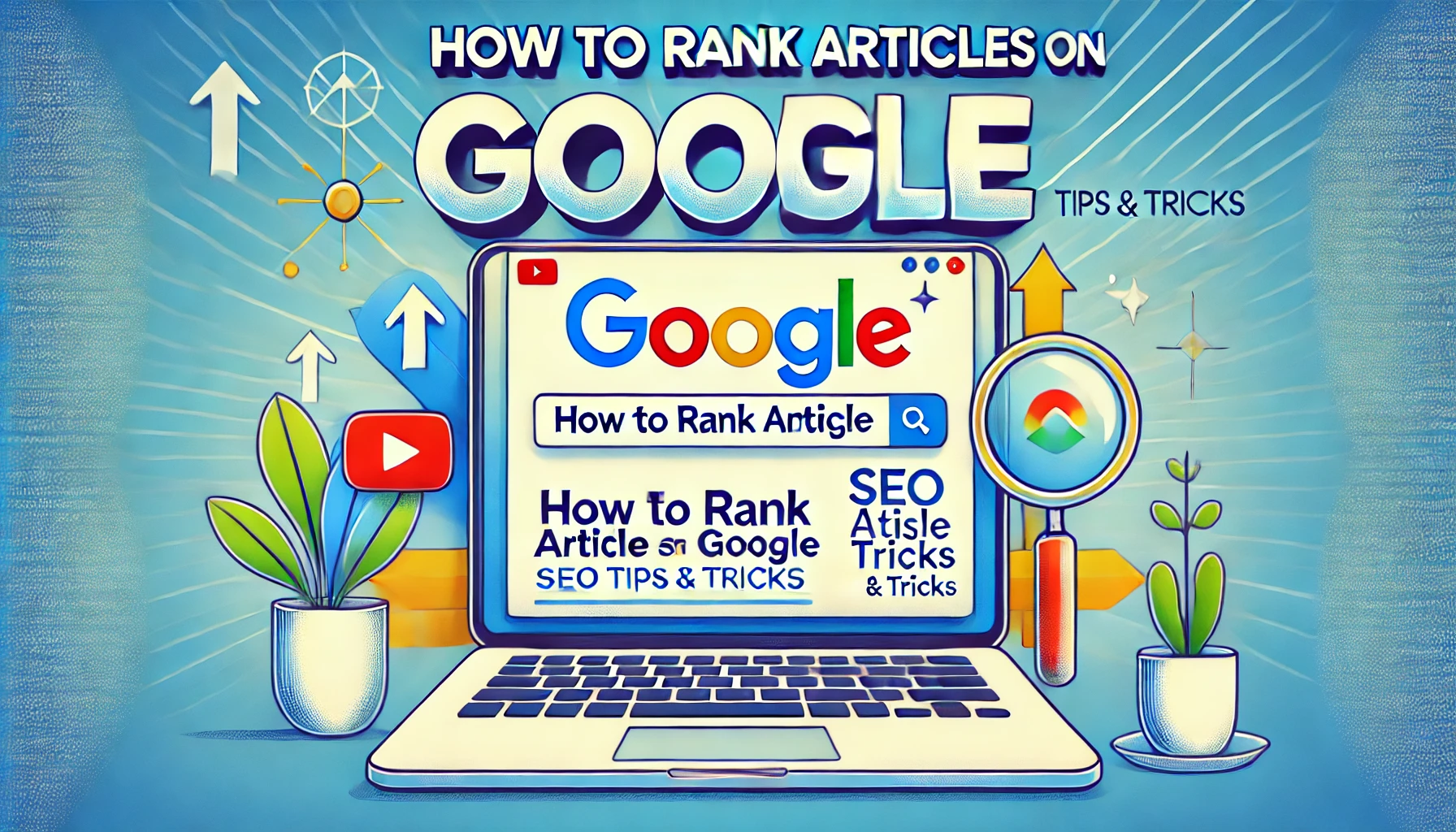Ranking an article on Google is the holy grail for content creators, marketers, and businesses. With millions of articles published daily, getting your content to rank high on Google can significantly boost your visibility, traffic, and credibility. This guide will walk you through the essential steps like:- SEO, Mobile optimization, Backlinks, etc. to help your articles climb the ranks of Google search results.
1. Keyword Research: The Foundation of SEO
Before you start writing, it’s crucial to understand what people are searching for. Keyword research helps you identify the terms and phrases your target audience is using. Here’s how to do it:
- Use Keyword Research Tools: Tools like Google Keyword Planner, Ahrefs, and SEMrush can help you find relevant keywords with high search volume and low competition.
- Long-Tail Keywords: Focus on long-tail keywords (e.g., “how to rank articles on Google”) as they are often less competitive and more targeted.
- Analyze Competitors: Look at the keywords your competitors are ranking for and identify gaps where you can create better content.
2. Create High-Quality Content
Google’s algorithms prioritize content that is valuable to users. Here’s how to create content that stands out:
- Solve Problems: Your content should address the questions or problems your audience is facing. This makes it more likely to be shared and linked to, which improves rankings.
- In-Depth Content: Long-form content (1,500+ words) tends to perform better in search rankings. Ensure your article is comprehensive and covers the topic thoroughly.
- Engaging and Readable: Use subheadings, bullet points, and short paragraphs to make your article easy to read. Include images, infographics, or videos to enhance the content.
- Originality: Avoid duplicate content. Google penalizes sites with plagiarized content. Always aim to provide a unique perspective or new information.
3. On-Page SEO Optimization
Optimizing your content for on-page SEO is critical to ranking on Google. Here’s what to focus on:
- Title Tag: Include your primary keyword in the title tag. Make it compelling to attract clicks.
- Meta Description: Write a concise and engaging meta description that includes your main keyword. This can improve your click-through rate (CTR).
- Header Tags (H1, H2, H3): Use header tags to structure your content. Include your primary keyword in the H1 tag and secondary keywords in H2 and H3 tags.
- Keyword Placement: Naturally include your primary and secondary keywords throughout the article. Avoid keyword stuffing, as it can lead to penalties.
- Internal Linking: Link to other relevant articles on your website to keep users engaged and improve your site’s structure.
4. Mobile Optimization
With the majority of searches now happening on mobile devices, having a mobile-friendly website is essential:
- Responsive Design: Ensure your website is responsive, meaning it adjusts to different screen sizes.
- Fast Loading Speed: Optimize images and minimize code to improve page load speed. Google favors faster websites.
- Mobile-First Indexing: Google primarily uses the mobile version of a site for indexing and ranking, so make sure your mobile site is as robust as your desktop version.
5. Build Quality Backlinks
Backlinks are one of the most significant ranking factors in Google’s algorithm. Here’s how to build them:
- Guest Blogging: Write guest posts for reputable websites in your niche. Include a link back to your site in the author bio or within the content.
- Outreach: Contact bloggers, influencers, and websites that might find your content valuable. Offer to collaborate or provide a resource in exchange for a backlink.
- Create Shareable Content: High-quality, valuable content is more likely to be shared and linked to. Infographics, original research, and in-depth guides are particularly link-worthy.
- Broken Link Building: Find broken links on other websites and suggest your content as a replacement.
6. Monitor and Analyze Your Performance
SEO is an ongoing process. Regularly monitoring your performance allows you to make necessary adjustments:
- Google Analytics: Use Google Analytics to track your website’s traffic, bounce rate, and user behavior. This can provide insights into how users interact with your content.
- Google Search Console: Monitor your search performance, check for indexing issues, and see which keywords are driving traffic to your site.
- Adjust Strategy: Based on your analysis, tweak your SEO strategy. This could involve updating old content, focusing on new keywords, or improving user experience.
7. Stay Updated with SEO Trends
Google’s algorithms are constantly evolving, and what works today might not work tomorrow. Stay informed about the latest SEO trends and updates:
- Follow SEO Experts: Keep up with industry experts and SEO blogs to stay updated on algorithm changes and best practices.
- Algorithm Updates: Be aware of Google’s major algorithm updates like Penguin, Panda, and BERT, and understand how they impact search rankings.
- Continuous Learning: SEO is not a one-time effort. Continuously educate yourself on new strategies and tools to stay ahead of the competition.
Conclusion
Ranking an article on Google requires a combination of keyword research, high-quality content creation, on-page optimization, mobile optimization, backlink building, and continuous monitoring. By following these steps and staying updated with SEO best practices, you can improve your chances of ranking higher on Google, driving more traffic to your website, and achieving your digital marketing goals.
Whether you’re a beginner or an experienced marketer, these strategies will help you navigate the ever-changing landscape of SEO and succeed in getting your content noticed by the right audience.
#epicinfinite #epicarticle #epicblog
What are your thoughts? Share them in the comments below.










